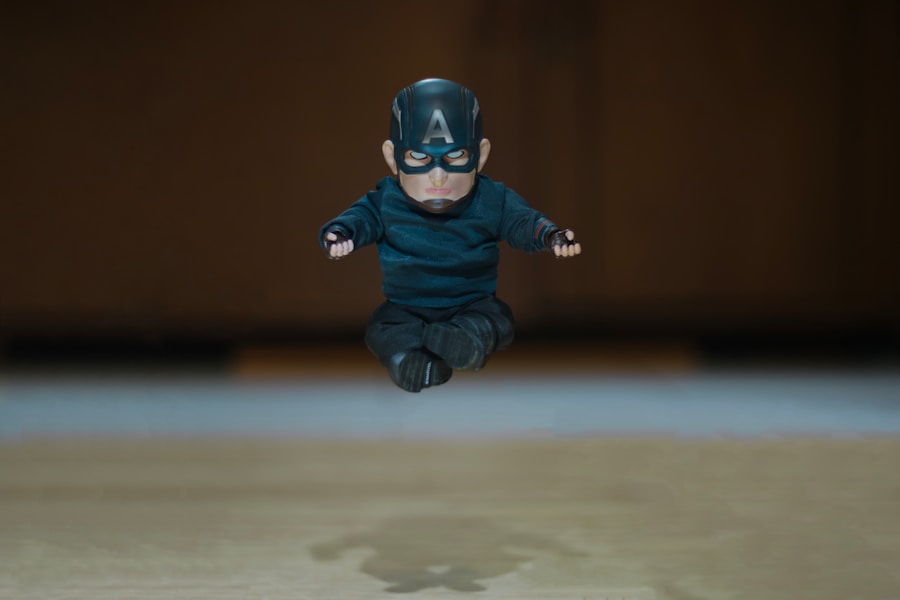In 2015, the landscape of cinema underwent a significant transformation, largely driven by the meteoric rise of superhero films. This year marked a pivotal moment when audiences around the globe became enamored with larger-than-life characters and their epic narratives. The success of franchises like Marvel and DC not only captivated viewers but also set the stage for a new era in filmmaking.
You may recall the excitement that surrounded the release of “Avengers: Age of Ultron,” which showcased an ensemble cast of beloved heroes, each with their unique abilities and story arcs. This film, along with others released that year, demonstrated the potential for superhero narratives to blend action, humor, and emotional depth, appealing to a wide demographic. The surge in popularity was not merely a coincidence; it was the result of years of careful world-building and character development.
You might remember how Marvel had meticulously crafted its cinematic universe over the preceding years, laying the groundwork for interconnected stories that kept audiences coming back for more. In 2015, this strategy reached new heights, as fans were not just watching individual films but were invested in a larger narrative tapestry. The excitement surrounding these films created a cultural phenomenon that transcended traditional movie-going experiences, turning theaters into communal spaces where fans could share their enthusiasm and theories about upcoming releases.
Key Takeaways
- Superhero films saw a significant rise in popularity in 2015, with several major releases captivating audiences worldwide.
- Blockbuster superhero films like “Avengers: Age of Ultron” and “Ant-Man” achieved massive box office success, solidifying the genre’s dominance in the film industry.
- Diversity and inclusion became increasingly important in superhero films, with the introduction of characters from different backgrounds and the casting of actors from diverse ethnicities.
- The evolution of superhero storytelling was evident in 2015, with films exploring complex themes and character development beyond traditional hero narratives.
- Superhero films had a profound impact on popular culture, influencing fashion, merchandise, and even inspiring real-life acts of heroism.
Blockbuster Releases and Box Office Successes
The year 2015 was marked by several blockbuster releases that shattered box office records and redefined what it meant to be a successful film. You may recall the staggering numbers that “Star Wars: The Force Awakens” achieved upon its release in December of that year. It not only reignited a beloved franchise but also demonstrated the immense power of nostalgia combined with innovative storytelling.
The film grossed over $2 billion worldwide, a testament to the insatiable appetite for superhero and sci-fi narratives that year. This success was not an isolated incident; it was part of a broader trend where superhero films consistently dominated box office charts. Moreover, films like “Ant-Man” and “Fantastic Four” showcased the diversity within the genre, appealing to different audiences while still maintaining the core elements that fans loved.
You might have noticed how these films experimented with tone and style, offering something fresh while still adhering to the superhero formula. The financial success of these films encouraged studios to invest even more in superhero narratives, leading to an influx of new projects and sequels that would further saturate the market in the years to come. This cycle of success not only benefited the studios but also created opportunities for filmmakers and actors to explore new creative avenues within the genre.
Diversity and Inclusion in Superhero Films

As superhero films gained traction in 2015, there was also a growing awareness of the need for diversity and inclusion within these narratives. You may have noticed how audiences began to demand representation on screen, pushing studios to rethink their casting choices and storylines. Films like “Black Panther,” which would later be released in 2018, were already being discussed as potential game-changers for the genre.
The conversations surrounding diversity were not just about race; they encompassed gender, sexuality, and various cultural backgrounds, reflecting a broader societal shift towards inclusivity. This push for diversity was evident in the way filmmakers approached character development and storytelling. You might recall how characters like Scarlet Witch and Falcon were given more prominent roles in films like “Avengers: Age of Ultron” and “Ant-Man,” respectively.
These characters not only added depth to the ensemble casts but also resonated with audiences who had long felt underrepresented in mainstream media. The growing emphasis on diverse narratives signaled a shift in Hollywood’s approach to storytelling, encouraging filmmakers to explore complex themes and characters that reflect the world we live in.
The Evolution of Superhero Storytelling
| Year | Number of Superhero Movies Released | Total Box Office Revenue (in billions) |
|---|---|---|
| 2000 | 5 | 1.3 |
| 2010 | 10 | 3.8 |
| 2020 | 20 | 11.5 |
The evolution of superhero storytelling has been one of the most fascinating aspects of this genre’s rise. In 2015, you could see how filmmakers began to experiment with narrative structures and character arcs that went beyond traditional hero-villain dynamics. The introduction of morally ambiguous characters and complex storylines added layers to what had previously been seen as straightforward tales of good versus evil.
You might have found yourself drawn into stories that challenged your perceptions of heroism and villainy, making you question who truly deserves redemption. Moreover, the blending of genres became increasingly prevalent during this time. Superhero films began incorporating elements from various genres such as horror, comedy, and even romance.
You may recall how “Deadpool” broke conventions by infusing humor and self-awareness into its narrative, appealing to both comic book fans and those who typically shy away from superhero films. This evolution in storytelling not only broadened the appeal of superhero narratives but also allowed filmmakers to push creative boundaries, resulting in a richer cinematic experience for audiences.
The Impact of Superhero Films on Popular Culture
Superhero films have undeniably left an indelible mark on popular culture since their rise in 2015. You may have noticed how these films have permeated various aspects of everyday life, from fashion trends inspired by iconic characters to merchandise that floods store shelves. The cultural impact is evident in how superhero themes have influenced everything from advertising campaigns to social movements.
You might recall instances where characters like Wonder Woman became symbols of empowerment, inspiring discussions about gender equality and representation. Furthermore, superhero films have fostered a sense of community among fans. You may have experienced this firsthand at conventions or online forums where enthusiasts gather to celebrate their favorite characters and stories.
This sense of belonging has transformed fandom into a vibrant subculture that thrives on shared interests and collective experiences. The impact extends beyond mere entertainment; it has sparked conversations about identity, morality, and societal issues, making superhero narratives relevant in today’s cultural discourse.
Criticisms and Controversies Surrounding Superhero Films

Despite their popularity, superhero films have not been without their criticisms and controversies. You may have encountered discussions about the formulaic nature of many blockbuster releases, with critics arguing that studios often prioritize profit over originality. This sentiment has led to debates about whether superhero films are stifling creativity within Hollywood or if they are simply catering to audience demand for familiar narratives.
You might find yourself pondering whether this trend is sustainable or if audiences will eventually crave something different. Additionally, controversies surrounding representation have sparked heated discussions within the fan community. While strides have been made towards inclusivity, you may have noticed ongoing debates about tokenism versus genuine representation.
Some fans argue that simply including diverse characters is not enough; they advocate for authentic storytelling that reflects the complexities of different cultures and experiences. These conversations highlight the need for continued progress within the genre as it evolves alongside societal expectations.
The Future of Superhero Films: What’s Next for the Genre
As we look ahead, the future of superhero films appears both promising and uncertain. You may be excited about upcoming projects that aim to push boundaries further than ever before. With studios increasingly willing to take risks on unconventional stories and characters, you might find yourself anticipating fresh narratives that challenge traditional tropes.
The success of films like “Shang-Chi” and “Eternals” suggests that audiences are ready for diverse stories that reflect a broader spectrum of experiences. Moreover, streaming platforms have begun to play a significant role in shaping the future of superhero storytelling. You may have noticed how series like “WandaVision” and “The Falcon and the Winter Soldier” have expanded on established characters while exploring new themes in ways that feature films cannot always achieve.
This shift towards serialized storytelling allows for deeper character development and more intricate plots, paving the way for a new era in superhero narratives that could redefine what it means to be a hero.
The Influence of Superhero Films on the Film Industry
The influence of superhero films on the film industry cannot be overstated. You may have observed how their success has prompted studios to invest heavily in franchise-building strategies, leading to an influx of sequels, spin-offs, and interconnected universes across various genres. This trend has reshaped Hollywood’s approach to filmmaking, prioritizing properties with established fan bases over original concepts.
While this strategy has proven lucrative, you might also wonder about its long-term implications for creativity within the industry. Additionally, superhero films have set new standards for visual effects and production quality. You may have marveled at the stunning visuals and groundbreaking technology used in these films, which have raised audience expectations across all genres.
As filmmakers strive to create immersive experiences that captivate viewers, you might find yourself witnessing a ripple effect where even non-superhero films adopt similar techniques to enhance their storytelling. In conclusion, the rise of superhero films since 2015 has transformed not only cinema but also popular culture at large. As you reflect on this journey, it’s clear that these films have sparked conversations about representation, creativity, and community while leaving an indelible mark on the film industry itself.
As we look toward the future, you can anticipate exciting developments that will continue to shape this dynamic genre for years to come.
